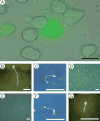Pharmacogenetics in model systems: defining a common mechanism of action for mood stabilisers
- PMID: 15950352
- PMCID: PMC1249490
- DOI: 10.1016/j.pnpbp.2005.03.020
Pharmacogenetics in model systems: defining a common mechanism of action for mood stabilisers
Abstract
Defining the underlying causes of psychiatric disorders has provided an ongoing and intractable problem. The analysis of the genetic basis of manic depression, in particular, has been impeded by the absence of a suitable model system and by the lack of candidate causative genes. One recent approach to overcome these problems has involved identifying those genes which control the sensitivity to anti-manic drugs in a model organism. Characterisation of the role of these genes and their encoded proteins in this model has allowed the analysis of their mammalian homologues to elucidate the therapeutic role of these drugs and the possible aetiology of manic depression. This approach has been used successfully with the cellular slime mould, Dictyostelium discoideum. This article introduces the use of model systems for pharmacogenetics research. It describes the identification of prolyl oligopeptidase in D. discoideum as a modulator of inositol phosphate signalling, and the subsequent identification of a common mechanism of action of three anti-manic drugs in mammalian neurons. The use of pharmacogenetics in model systems will provide a powerful tool for the ongoing analysis of both the treatment and cause of psychiatric disorders.
Figures




Similar articles
-
Search for a common mechanism of mood stabilizers.Biochem Pharmacol. 2003 Jul 15;66(2):179-89. doi: 10.1016/s0006-2952(03)00187-4. Biochem Pharmacol. 2003. PMID: 12826261 Review.
-
Pharmacogenetics: defining the genetic basis of drug action and inositol trisphosphate analysis.Methods Mol Biol. 2006;346:517-34. doi: 10.1385/1-59745-144-4:517. Methods Mol Biol. 2006. PMID: 16957312
-
Genetic influences on response to mood stabilizers in bipolar disorder: current status of knowledge.CNS Drugs. 2013 Mar;27(3):165-73. doi: 10.1007/s40263-013-0040-7. CNS Drugs. 2013. PMID: 23378337 Free PMC article. Review.
-
The mood stabiliser lithium suppresses PIP3 signalling in Dictyostelium and human cells.Dis Model Mech. 2009 May-Jun;2(5-6):306-12. doi: 10.1242/dmm.001271. Epub 2009 Apr 21. Dis Model Mech. 2009. PMID: 19383941 Free PMC article.
-
Novel drugs and therapeutic targets for severe mood disorders.Neuropsychopharmacology. 2008 Aug;33(9):2080-92. doi: 10.1038/sj.npp.1301652. Epub 2008 Jan 2. Neuropsychopharmacology. 2008. PMID: 18172433 Review.
Cited by
-
Processing of the phalloidin proprotein by prolyl oligopeptidase from the mushroom Conocybe albipes.J Biol Chem. 2009 Jul 3;284(27):18070-7. doi: 10.1074/jbc.M109.006460. Epub 2009 Apr 23. J Biol Chem. 2009. PMID: 19389704 Free PMC article.
-
Curcumin affects gene expression and reactive oxygen species via a PKA dependent mechanism in Dictyostelium discoideum.PLoS One. 2017 Nov 14;12(11):e0187562. doi: 10.1371/journal.pone.0187562. eCollection 2017. PLoS One. 2017. PMID: 29135990 Free PMC article.
-
Pharmacogenetics of resistance to Cisplatin and other anticancer drugs and the role of sphingolipid metabolism.Methods Mol Biol. 2013;983:185-204. doi: 10.1007/978-1-62703-302-2_10. Methods Mol Biol. 2013. PMID: 23494308 Free PMC article.
-
Issues about the physiological functions of prolyl oligopeptidase based on its discordant spatial association with substrates and inconsistencies among mRNA, protein levels, and enzymatic activity.J Histochem Cytochem. 2009 Sep;57(9):831-48. doi: 10.1369/jhc.2009.953711. Epub 2009 May 26. J Histochem Cytochem. 2009. PMID: 19687473 Free PMC article. Review.
-
Conserved valproic-acid-induced lipid droplet formation in Dictyostelium and human hepatocytes identifies structurally active compounds.Dis Model Mech. 2012 Mar;5(2):231-40. doi: 10.1242/dmm.008391. Epub 2011 Oct 14. Dis Model Mech. 2012. PMID: 22003123 Free PMC article.
References
-
- Amin A, Li Y, Finkelstein R. Identification of a Drosophila prolyl endopeptidase and analysis of its expression. DNA Cell Biol. 1999;18:605–610. - PubMed
-
- Augustyns K, Borloo M, Belyaev A, Rajan P, Goossens F, Hendriks D, Scharpe S, Haemers A. Synthesis of peptidyl acetals as inhibitors of prolyl endopeptidase. Bioorg Med Chem Lett. 1995;5:1265–1270.
-
- Berridge MJ, Irvine RF. Inositol trisphosphate, a novel second messenger in cellular signal transduction. Nature. 1984;312:315–321. - PubMed
-
- Berridge MJ, Downes CP, Hanley MR. Neural and developmental actions of lithium: a unifying hypothesis. Cell. 1989;59:411–419. - PubMed
Publication types
MeSH terms
Substances
Grants and funding
LinkOut - more resources
Full Text Sources
Other Literature Sources
Medical

